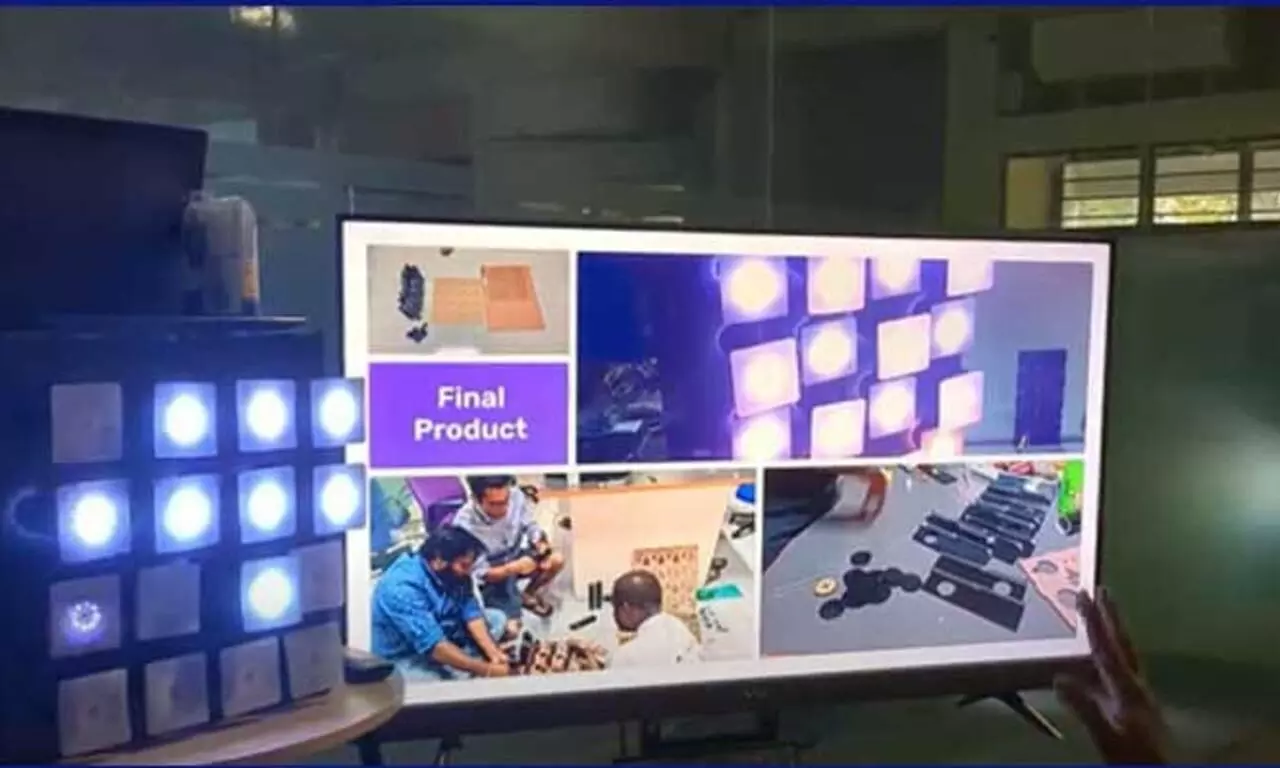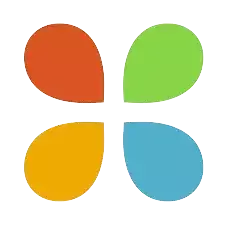IIIT-H students win accolades for interactive wall art in 'Make It Move' contest
The students created their artwork during a two-month Product Design Workshop, organised as part of their MTech coursework

HYDERABAD: An interactive wall art created by M.Tech students of the International Institute of Information Technology - Hyderabad (IIIT-H) earned them second place in an online contest, 'Make It Move'.
The students created their artwork during a two-month Product Design Workshop, organised as part of their MTech coursework. "This workshop is the first-of-its-kind at the institute where we instill multidisciplinary problem-solving, going beyond software solutions," said Prakash Yalla, Professor of Practice and the course's lead instructor.
He said that the course included challenges that require students to make product design decisions, using rapid prototyping techniques and tools of Makers Laboratories.
As a fitting finale to the course, the students were asked to create a collaborative interactive wall art project. The 'Make It Move' competition sought projects that included movement. It includes flying, running, walking, rolling on wheels, floating, articulating appendages, opening and closing, and much more, according to the contest rules.
Explaining why a multidisciplinary task was zeroed in on, Prof. Raghu Reddy, Head of the Software Engineering Research Centre, says, "Given the diverse background of the students, the aim was to bring forward their respective expertise. For example, some students are from the Computer Science background, some are from the Mechanical side, while some others had experience in managing projects."
Such a project would require all of them to work together in a collaborative manner. While working on this, Josh, who is a regular contributor to the Instructables platform, discovered that their project was a perfect fit for the 'Make It Move' contest and submitted their joint entry. Josh recently won the second prize in the Circuits Remote Control contest for successfully converting an old exercise bike into a gamepad.
What they made
The team used technology in a creative way to allow the audience to interact with the artwork. "The idea was to make it a fun experience," Josh adds. They began by creating an electro-mechanical tile with 16 servo motors that moved LEDs forward and backward. The tile can be used alone or in conjunction with other tiles to form a large "wall." When a user's palm comes close to the tile(s), the tiles move, producing interesting visual effects and patterns. This was made possible by using a camera and computer vision to track palm movement.
How they built It
While the initial prototypes were created using 3D printers from the Makers Lab, the final version was created using a laser cutting machine and MDF and acrylic. To provide movement, the acrylic sheets were assembled with individual cylinders fitted with a rack and pinion mechanism driven by servo motors. The team found the sheer size of the project to be difficult. "I've worked on similar electronics projects in the past, but I've never controlled 16 motors that powered nearly 990 LEDs." "You can actually change the colour of each LED," says Josh.
The Team
"The biggest advantage of our project is our team with its complementing skills," remarks Gopi. With his prior experience in Engineering equipment manufacturing, Gopi's presence helped in planning, visualising, decision making and assembling the project, earning him the sobriquet of 'Project Manager' for the task. "While Josh and Krishna handled Electronics, Anuj and Srinivas took care of designing and prototyping; Venkat focussed on Computer Vision; and Poorna on Documentation. Bhargava and I looked after the assembling, procurement and machine work," he elaborates.
First Of Many
"We were constrained by time and hence restricted ourselves to a small "wall"," says Josh, adding that it would be cool if they could scale it to something bigger like tracking the entire body or creating a more complex interactive exchange where the lights change colour in response to dancing or jumping.
"The interaction can be configured in multiple ways. It's just a matter of changing code." For Gopi, what's particularly noteworthy is that with the exception of two electronic parts, all the other remaining parts of the Project were designed, fabricated, and assembled with professional level finishing in the Makers Lab.
"The Instructables community has been around since 2005. Some of us used to get help from the platform for our school Science projects. So it was nice to win a contest conducted by it," says Anuj.
Expressing satisfaction at the way the workshop and its culminating project turned out, Prakash says, "The kinetic wall is the first set of lego blocks we have built on which we plan to create many more interactive art forms for everyone to experience in real time".
The interactive wall was created by M.Tech students, Vinaya Gopi, Anuj Malviya, Josh Joy, Krishna Sandilya, Srinivas Saladi, Bhargava Tadi, Venkat Sai and Poorna Chandra, who came in second place in the 'Make It Move' challenge hosted by Autodesk Instructables - an online community of makers and innovators who document their projects in order to share them with others.



